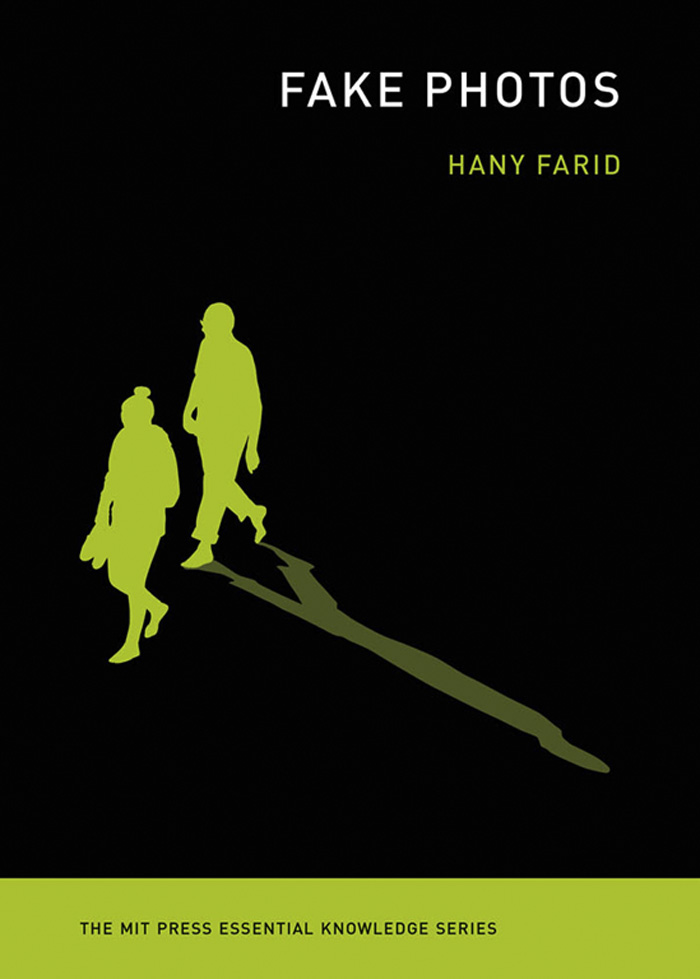Hany Farid - Fake Photos
Here you can read online Hany Farid - Fake Photos full text of the book (entire story) in english for free. Download pdf and epub, get meaning, cover and reviews about this ebook. year: 2019, publisher: MIT Press, genre: Computer. Description of the work, (preface) as well as reviews are available. Best literature library LitArk.com created for fans of good reading and offers a wide selection of genres:
Romance novel
Science fiction
Adventure
Detective
Science
History
Home and family
Prose
Art
Politics
Computer
Non-fiction
Religion
Business
Children
Humor
Choose a favorite category and find really read worthwhile books. Enjoy immersion in the world of imagination, feel the emotions of the characters or learn something new for yourself, make an fascinating discovery.

- Book:Fake Photos
- Author:
- Publisher:MIT Press
- Genre:
- Year:2019
- Rating:5 / 5
- Favourites:Add to favourites
- Your mark:
- 100
- 1
- 2
- 3
- 4
- 5
Fake Photos: summary, description and annotation
We offer to read an annotation, description, summary or preface (depends on what the author of the book "Fake Photos" wrote himself). If you haven't found the necessary information about the book — write in the comments, we will try to find it.
Fake Photos — read online for free the complete book (whole text) full work
Below is the text of the book, divided by pages. System saving the place of the last page read, allows you to conveniently read the book "Fake Photos" online for free, without having to search again every time where you left off. Put a bookmark, and you can go to the page where you finished reading at any time.
Font size:
Interval:
Bookmark:

The MIT Press Essential Knowledge Series
A complete list of the titles in this series appears at the back of this book.
Hany Farid
The MIT Press | Cambridge, Massachusetts | London, England
2019 The Massachusetts Institute of Technology
All rights reserved. No part of this book may be reproduced in any form by any electronic or mechanical means (including photocopying, recording, or information storage and retrieval) without permission in writing from the publisher.
This book was set in Chaparral Pro by Toppan Best-set Premedia Limited. Printed and bound in the United States of America.
Library of Congress Cataloging-in-Publication Data
Names: Farid, Hany, author.
Title: Fake photos / Hany Farid.
Description: Cambridge, MA : The MIT Press, [2019] | Series: The MIT Press essential knowledge series | Includes bibliographical references and index.
Identifiers: LCCN 2018058334 | ISBN 9780262537490 (pbk. : alk. paper)
Subjects: LCSH: Image authentication. | Trick photography. | Authentication.
Classification: LCC TA1654 .F37 2019 | DDC 006.4/2--dc23 LC record available at https://lccn.loc.gov/2018058334
10 9 8 7 6 5 4 3 2 1
d_r0
The MIT Press Essential Knowledge series offers accessible, concise, beautifully produced pocket-size books on topics of current interest. Written by leading thinkers, the books in this series deliver expert overviews of subjects that range from the cultural and the historical to the scientific and the technical.
In todays era of instant information gratification, we have ready access to opinions, rationalizations, and superficial descriptions. Much harder to come by is the foundational knowledge that informs a principled understanding of the world. Essential Knowledge books fill that need. Synthesizing specialized subject matter for nonspecialists and engaging critical topics through fundamentals, each of these compact volumes offers readers a point of access to complex ideas.
Bruce Tidor
Professor of Biological Engineering and Computer Science
Massachusetts Institute of Technology
Stalin, Mao, Hitler, Mussolini, Castro, Brezhnev, and many others had photographs manipulated in an attempt to rewrite history. These men understood the power of photography: if they changed the visual record, they could change history.
Back then, cumbersome and time-consuming darkroom techniques were required to alter the historical record. Today, powerful and low-cost digital technology has made it far easier for nearly anyone to alter digital images. And the resulting fakes are often difficult to detect. This photographic fakery is having a significant impact in many areas of society. Doctored photographs are appearing in tabloids and fashion magazines, government media, mainstream media, fake-news items, social media, on-line auction sites, on-line dating sites, political ad campaigns, and scientific journals. The technologies that can distort and manipulate digital media are developing at break-neck speeds, and it is imperative that the technologies that can detect such alterations develop just as quickly.
Stalin, Mao, Hitler, Mussolini, Castro, Brezhnev, and many others had photographs manipulated in an attempt to rewrite history. These men understood the power of photography: if they changed the visual record, they could change history.
Nearly two decades ago, I was idly waiting in line at the library when I noticed an enormous book on a cart: The Federal Rules of Evidence. As I was thumbing through the book, I came across Rule 1001 of Article X, Contents of Writing, Recordings, and Photographs, which outlined the rules under which photographic evidence can be introduced in a court of law. The rules seemed straightforward, until I read the definition of original:
An original of a writing or recording means the writing or recording itself or any counterpart intended to have the same effect by the person who executed or issued it. For electronically stored information, original means any printoutor other output readable by sightif it accurately reflects the information. An original of a photograph includes the negative or a print from it.
I was struck that the definition of original included such a vague statement as or other output readable by sight.
At the time, the internet, digital cameras, and digital editing software were still primitive by todays standards. The trajectory, however, was fairly clear, and it seemed to me that advances in the power and ubiquity of digital technology would eventually lead to complex issues of how we can trust digital media in a court of law.
This serendipitous event led me on a two-decade quest to develop techniques for authenticating digital content. These authentication techniques work in the absence of any type of digital watermark or signature. Instead, these techniques model the path of light through the entire image-creation process, and quantify physical, geometric, and statistical regularities in images that are disrupted by the creation of a fake.
Initially, the primary application of my digital forensic techniques was to authenticate photographic evidence in criminal and civil proceedings (the term forensics, after all, means pertaining to courts of law). Occasionally, I was also asked to examine the authenticity of images for law enforcement agencies, news organizations, and private citizens. This balance has shifted in recent years with the increase in the deliberate publication of false information for political or financial gain. Increasingly, I am called upon to examine images and videos that have been disseminated in various media, especially social media. In some of the most alarming cases, the images are fakes created by individuals or state-sponsored entities intent on manipulating elections or inciting civil unrest.
As the uses of fake images have become more insidious, the tools to produce these images have become more sophisticated and widely available. Recent advances in machine learning, for example, have removed many of the time and skill barriers previously required to create high-quality fakes, and the resulting fakes are very convincing. These same automatic tools can also be turned against our forensic techniques through generative adversarial networks (GANs) that modify fake content to bypass forensic detection.
Our ability to authenticate digital information has never been more urgent or more challenging. The goal of this book is to give lay readers an understanding of the underlying principles and primary techniques of image forensics. This knowledge should allow readers to gauge when and to what extent images can be trusted.
The authentication techniques described in this book all rely on leveraging some aspect of the image recording pipeline: the interaction of light in the physical scene; the refraction of light as it passes through the camera lenses; the transformation of light to electrical signals in the camera sensor; and, finally, the conversion of electrical signals into a digital image file. At each stage of this image formation process, certain regularities are introduced into the final image. The authentication techniques exploit deviations from these regularities to expose photo manipulation.
Each section of the book describes a different technique for analyzing an image. The sections are intended to stand alone, and techniques that are related by application or process are cross-referenced. The techniques in the first chapter are fairly intuitive; those in the second chapter are a bit more challenging, while the techniques in the third chapter are relatively complex. In each case, Ive tried to provide an overview of how the technique works and when it should be applied. The details of the implementation as well as additional techniques are provided in my technical handbook
Next pageFont size:
Interval:
Bookmark:
Similar books «Fake Photos»
Look at similar books to Fake Photos. We have selected literature similar in name and meaning in the hope of providing readers with more options to find new, interesting, not yet read works.
Discussion, reviews of the book Fake Photos and just readers' own opinions. Leave your comments, write what you think about the work, its meaning or the main characters. Specify what exactly you liked and what you didn't like, and why you think so.







